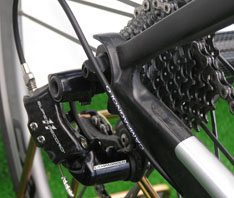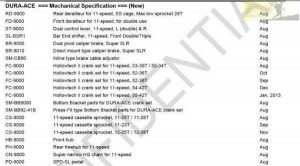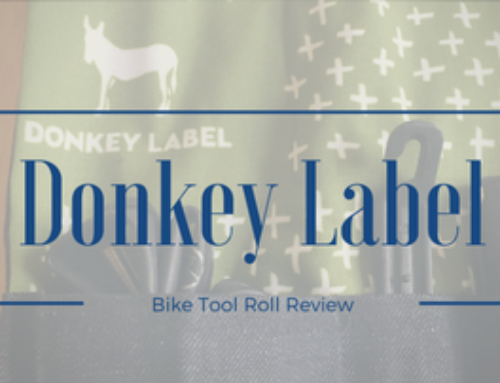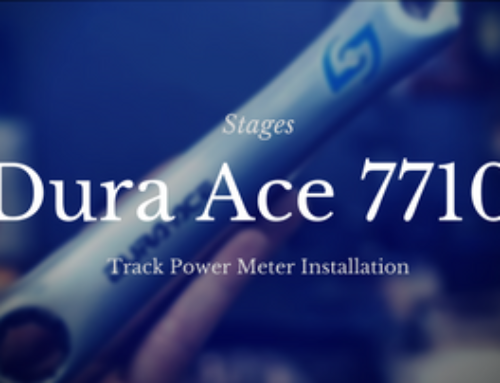There seems to be a rising trend in shifting performance: more is better. While it’s very true that Jens once said “more is better” he WAS talking about coffee at the time, not cogs or batteries. But with the leak of Shimano’s Dura Ace 9000 spec sheet, we see that the market is once again forcing change upon us, this time in the form of 11 cogs. Campagnolo has been doing it for quite a few years already, but is there really any benefit other than being able to say “this one goes to 11?” Judging by information released today about SRAM’s 2012 Red group, not everyone is buying into the claim that “more is better.”
 Fact or fiction?
Fact or fiction?
There are plenty of myths surrounding 11 speed drivetrains. When they first came out, people claimed that you could have lower gears, tighter gears, weaker chains, shorter component lifespan and incompatibility with current systems. Basically, everything that could be said about a new technology was said. But in reality, what ended up being true and not true, and is 11 speed really better than 10?
True Lies
Current manufacturers are trending towards adding more gears within the typical 11-28 range, instead of going to wider and wider spacing (the exception being SRAM and their widely geared 10 speed setups.) Generally, the 11th cog is introduced in order to make the jumps in between the cogs smaller and more manageable. Indeed, in the case of DA9000, the rear derailleur’s max capacity is 28 teeth, so don’t expect to see any wide range cassettes a la SRAM Apex. In some cases (and hopefully this one,) the Prodigal Son, the 18t cog is making a comeback. Noteworthy in the DA9000 lineup is the retirement of the 12-27 cassette, replaced by a 12-28. Spacing should be…interesting to say the least.
Chain weakness is something else that has been made light of. While we’ve seen substantial decreases in chain width to accomodate tighter spacing, chains haven’t become the frail noodles that people touted them to be. While there seems to be some anecdotal evidence that 9 speed chains are quite a bit stockier than their 10 speed offspring, there can’t really be said between 10 to 11 speed. SRAM had some growing pains with its first run of 10 speed chains, with the most notable chain failure being Cancellara’s chain break in the Tour of Flanders. Campy’s 11 speed chains have proven to be quite durable, even if they require a stupidly expensive Campy specific chain tool (actually, other companies have cracked the Campy chain tool stranglehold these days, so it’s not quite as bad.)
Component longevity doesn’t seem to be affected much either, except in the obvious situations of titanium cogs and ultralight parts. In those cases, it’s well known that durability is sacrificed in favor or weight, and the narrower cogs seem to wear yet faster than their bulkier precursors, although any ultra light component will wear faster. As far as chains and chainrings go, there doesn’t seem to be much, if any difference from 10 to 11 speed. People are not going through twice the number of chains just because they are slightly narrower on 11 speed systems.
 Compatibility is an issue that will quickly be raised by a substantial number of consumers. As was the case with 10 speed’s release, people were fuming about the need to replace all their 9 speed gear with newer 10 speed bits. This wasn’t much of an issue with Campy when they went 11 (with their specific freehub design,) but now that the elephant in the middle of the manufacturer room has released plans for 11 speed, it’s going to be an issue. According to the Shimano leak, there will be “9000 series rear freehub” released along with the group. This could mean that the current 8/9/10 speed freehub will be incompatible with the new 11 speed bits (it could also just be an error, meaning that there will be a new 9000 series rear hub.) While the transition from 9 to 10 was made simple by keeping the same freehub, the 10 to 11 speed increase will probably involve a new freehub, adding to the already substantial cost of “upgrading.” Now, along with shifters, cassette and chain, you may need an 11 speed freehub for each wheel you want to convert. Sounds like a marketing ploy to me.
Compatibility is an issue that will quickly be raised by a substantial number of consumers. As was the case with 10 speed’s release, people were fuming about the need to replace all their 9 speed gear with newer 10 speed bits. This wasn’t much of an issue with Campy when they went 11 (with their specific freehub design,) but now that the elephant in the middle of the manufacturer room has released plans for 11 speed, it’s going to be an issue. According to the Shimano leak, there will be “9000 series rear freehub” released along with the group. This could mean that the current 8/9/10 speed freehub will be incompatible with the new 11 speed bits (it could also just be an error, meaning that there will be a new 9000 series rear hub.) While the transition from 9 to 10 was made simple by keeping the same freehub, the 10 to 11 speed increase will probably involve a new freehub, adding to the already substantial cost of “upgrading.” Now, along with shifters, cassette and chain, you may need an 11 speed freehub for each wheel you want to convert. Sounds like a marketing ploy to me.
Net worth
So is an “upgrade” to 11 speed by Shimano really an upgrade? Well, considering you’re not getting anything other than an extra cog that likely won’t do a whole lot other than tighten up the jumps in your gearing, it sure doesn’t seem like it. The proposition of installing $120 cassettes on half a dozen wheels, swapping every bike to 11 speed shifting and then selling off the 10 speed stuff sounds like more of a hassle than it’s worth.
SRAM has stuck with 10 speed for their revamped Red line, slated to hit about the same time as the DA 9000 group. It will be interesting to see if SRAM follows Shimano like a lost puppy or forges its own path. Hopefully the latter, as I’m not looking forward to yet another “upgrade.”
Finally, where does it end? Shimano has had a patent on a 14 speed rear cluster for quite some time now. In reality, going to 14 cogs out back would both be unnecessary (in my opinion) and excessive, not to mention it would almost certainly involve introducing 135mm (or greater) spacing in the rear. Considering most road bikes today are 130mm rear spacing, it would be unrealistic to expect people to purchase a new frame simply to take advantage of more cogs.
But the bottom line is what you want and need. If you’re the type requiring the latest and greatest, then 11 speed may be worth the financial sacrifice to adopt. If you’re happy with the options you have now, stick with your 10 speed gear until you ride it into the ground. The choice is yours.






A very interesting article. I’m very curious to know your honest opinion of electronic shifting such as Di2 etc
I’m not terribly fond of the idea.
Personally, I feel like it really adds a huge disconnect between the bike and the rider. Pushing a button is far from the feeling of activating a cable pulled shifter. Sure, it’s easy, and sure it’s supposedly perfect every time (which we all know it isn’t, and mis-shifts/mistakes can still happen) but I don’t see it as an improvement. For the same reason, I spent 95% of the summer riding my bike technologically blind, and by that I mean I put a map screen or virtual partner screen up on my Garmin and rode by feel. Only after getting home did I mess with looking at power numbers to see performance and improvement.
My Red parts can fire through shifts just as fast as the Di2 can, and I can actually feel what’s happening in the drivetrain as I shift. That’s not possible with Di2.
If something goes haywire on my bike now, I have two independent systems for front and rear shifting (2 cables.) Anything goes wrong with Di2, it’s all tied together. There’s also no way of moving the derailleur if the system should fail out on the road (Campy’s system has a way to move the derailleur manually.)
It’s not serviceable by a home mechanic. The cost of the diagnostic tool is up there, and I don’t believe that Shimano will even sell it to a private consumer. You’re tied to a shop for all your service on the drive train.
It has a battery. I carry enough things with batteries that I forget to charge. I don’t want another.
It’s a retrofit (at the moment.) There are a number of companies who are working on hiding batteries, wires, junction boxes, battery indicators and programming modules inside the frame, post and handlebars. Without those, the battery is just stuck on, there are wires run with tape and zip ties….not aesthetically pleasing for me.
Lastly, there’s a huge incompatibility with other parts. If I break my Red rear derailleur, I can pull the Rival off my ‘cross bike or the Force off my shelf. If I were to break a Di2 rear derailleur, I can’t replace it with anything but Di2 (at significant cost, to boot.) I’m all for a system that keeps compatibility across their range.
Whew. Lots of personal opinions there, but just my take on it.
To be honest this echoes many of the concerns and suspicions I have. Also, emotionally, it reminds me of what one loses when driving an automatic car versus a stick. Yes the automatic is easier and more convenient and yet one is also removed from the connection with the vehicle and the overall driving experience. I had been thinking of investing in Di2s but based on my own feelings/suspicions and your affirmations I will be sticking to ‘manual’ SRAMS. Many thanks for the candid and in depth reply.